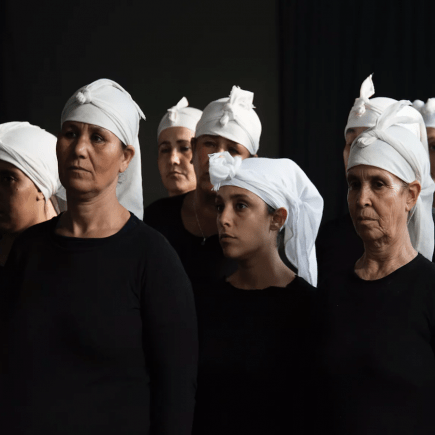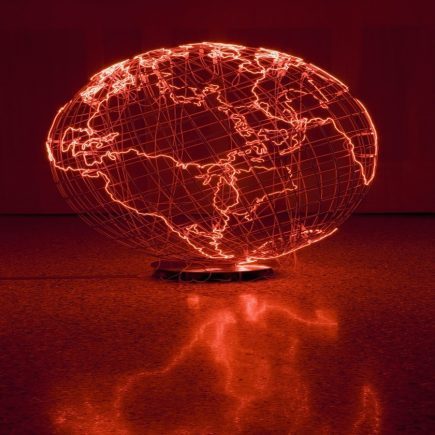
Rabat’s administrative and cultural capital will host the first female dedicated Biennale from September 24 -December 2019. The event entitled “An instant before the world” is dedicated to contemporary female artists and will include art collectives. Using Rabat, as an axis point, the art fair will look at art history through the eyes of North Africa. It will showcase artists from over thirty countries from Africa, Europe, the Arab World, North America, Latin America, and Asia. The biennale intends to set a new tone for Morocco and declares to the world, “the woman is at the beginning of everything.” The works of over sixty women from more than 30 nationalities will be featured. These female artists are architects, filmmakers, choreographers, and directors. It is the second biennale in Rabat, however the first dedicated to paying tribute to women’s art, and responding to the gender-specific inequalities found in many cultures. The exhibition schedule is for several months and then will be held every two years. The Rabat Biennale is curated by Algerian art historian and architect Abdelkader Damani, the current director of the Regional Contemporary Art Fund (FRAC) of Center-Val de Loire in France, and co-curator of the Moroccan Dakar Biennale in 2014. Damani claims that “the women artists invited” are part of a turning point in the presentation of Moroccan art.
“The biennale will be centered around a fundamental question: how can artists not change, transform or criticize the world, but rewrite it, remake it from the beginning ‘rewriting of the world’ ….and pass through a work of artistic reflection …. to relearn to feel the world. The history of art has been essentially written from a male point of view. We have therefore chosen to position ourselves very clearly on this issue of inequality in art,” states, Abdelkader Damani.

Woman Artists Featured at the Rabat Biennale
Sixty-four females will appear in the Rabat Biennale. There will also be an homage to Egyptian singer Umm Kulthum. Dubbed as the “The voice of Egypt,” the talented singer was known for her unique vocal ability and style. Her records sold over 80 million copies worldwide.

Moroccan Female Artists:
Tala Hadid– is a Moroccan-Iranian award-winning director, producer, and photographer. She is the daughter of Foulath Hadid, an Iraqui writer, an expert on Middle Eastern affairs. She is also the niece of the legendary architect Zaha Hadid. Tala’s first full-length film Sacred Poet was completed during her undergraduate studies at Brown University. Her thesis film Tes Cheveux Noirs Ihsan was shot in Northern Morocco in the Rif Mountains and won the 2005 Cinecolor/Kodak Prize and in June 2005 received a Student Academy Award. The film has screened in festivals around the world including in New York at the Lincoln Center, Sundance, Rotterdam, the Fajr Film Festival in Tehran, the Kiev International Film Festival, the Sydney Film Festival, the International Film Festival Oberhausen and L’Institut du Monde Arabe in Paris. Tes Cheveux Noirs Ihsan has won many awards including the Global Lens Prize, A BAFTA special mention, a Special Jury Prize and Best Actress Award at the Tangiers International Film Festival. Here other interesting works include Heterotopia, a series of photographs documenting life in a New York City brothel and a documentary film work in Morocco. In 2012, she was awarded the Peter S Reed Foundation Arts to fund the latter project. In 2014, Hadid completed Itarr el Layl (The Narrow Frame of Midnight), a feature film telling the journey of a man who travels through Morocco to Turkey and then Iraq during the second Iraq War.
Narjiss Nejjar – is a Tangier born filmmaker and screenwriter. Her film Les Yeux Secs (Cry No More) is considered her feature debut. It played at Cannes in 2003 and the 4th International Festival of Rabat Film. Film Les Yeux Secs tells the story of Mina a former prostitute released from prison after 25 years. She is returned to the Berber village by her bus driver, who pretends to be her son. Only male customers are allowed into the community. He falls for Mina’s daughter, who has a daughter of her own and is about to experience the “loss of virginity ritual”. Neither daughter or granddaughter know of Mina’s true identity, however, Mina sets out on a mission to stop the sex-work-cycle at the village.

Bouchra Ouizguen– since 1998 this dancer and choreographer has committed to developing the local Moroccan dance scene and founded Company O. Her project Corbeaux (Crows) with the Walker organization, is considered a living sculpture and ecstatic performance catharsis. The 22-member collective of Moroccan and Minnesotan women are portrayed in choreography evoking movement and ritual trance practices of the Marrakech region. It has been called “a sound sculpture, raw and urgent.” The piece has been performed at the Avignon Festival, Festival Montpellier Danse, the Centre Georges Pompidou in Paris, the Marrakech Biennale, and the Festival d’Automne. It also received the New Choreographic Talent award from France’s Society of Dramatic Authors and Composers (SACD). Ouizguen works and lives in Marrakech.

International Female Artists:
Zaha Hadid- the late Iraqi British born architect was the first female to receive the Pritzker Architecture Prize in 2004. She also took the UK’s most prestigious architectural award, the Stirling Prize in both 2010 and 2011. Her innovative international designs touched and inspired people around the world. In 2012, Queen Elizabeth II proclaimed Hadid a Dame for her extraordinary services in architecture. Hadid passed away before completing her first project in Africa— the Grand Theatre of Rabat. It has been said to be her legacy project. The unique theatre design has fantastic lines, curves, and a fluidity inspired by Rabat’s river and Arabic calligraphy. The structure includes a 1,800-seat theater and 7,000-seat open-air amphitheater with crystalline geometric patterns. These elements were inspired by traditional Moroccan muqarnas and local river landscape. The development is located along the Bouregreg valley and near the neighboring city Salé. The project was supposed to be completed in 2010 however Hadid’s sudden passing delayed the project.

Mouna Hatoum-Hatoum- the Palestinian born artist explores conflict and contradictions through the use of surrealism and minimalism. Since the 1980’s she has been making multimedia installations using grid and geometric forms. She often incorporates items typically found in the house and places them in an unusual context. She completed her studies at the School of Art where she focused on ideas around gender and race. Her cultural background – she was born in Lebanon to an exiled Palestinian – provoked her to use performance art to explore the effects of politics on people. Critics say that she has a unique talent to take local or personal issues and make them universally relevant.
Candice Breitz– is a South African artist who works in video and photography largely characterized by moving installations. They focus on the economy’s portrayal of contemporary media and culture. She often uses celebrity figures or fictional characters to convey her messages. She is a Prince Pierre de Monaco Prize winner and represented South Africa at the Venice Biennale. She lives in Berlin and has been a professor at the Braunschweig University of Art since 2007. One of her most internationally notable pieces is Love Story, a seven-channel film installation. The piece shares the individual stories of six individuals who fled their countries.

Ghada Amer- the Egyptian born, France raised artist has appeared in Biennales across the world, including, ones in Venice, Sydney, and the Whitney Biennale. She famously uses embroidery to explore desire and the female body. ” I believe that (women) should like their bodies and use them as tools of seduction.” She uses her creations to reject oppressive laws placed to govern women. Her work addresses the ambiguous, provokes conversations of Eastern and Western identities, and asks what is feminine vs masculine. Her messages are conveyed through paintings, sculptures and public garden projects.
Male Artists
Male artists will not be excluded from the biennale, however, their section will be smaller. Among the Moroccan talent, attendees can see works by Mohamed El Baz; he organized a collective exhibition with six visual artists. Also, Futura, a street artist will have their art shown at Rabat Hassan II Park.
Participating Venues in Rabat
During the three months that the Rabat Biennale has a presence in the city, several art spaces will partner with the organization and run special events. All aim to encourage the promotion of women’s art and expose the world to Moroccan artists. Partnering museums and art spaces will include the Mohammed VI Museum of Modern and Contemporary Art (MMVI), the Villa des Arts, Espace Expressions CDG, and historical spaces like including the Museum of Oudayas, Borj Addoumoue (Bastion of Tears, and Fort Hervé (Borj Lakbir).
“We wanted to create an event for everyone in the city, “said Abdelkader Damani, general commissioner of the Rabat Biennale. The project is funded by the National Museums Foundation (FNM) and other private funds. Its successful launch is the result of a meeting between Mehdi Qotbi, president of the FNM, and Jack Lang, president of the Arab World Institute (IMA). The Rabat Biennale is planned to will be held every other year.





